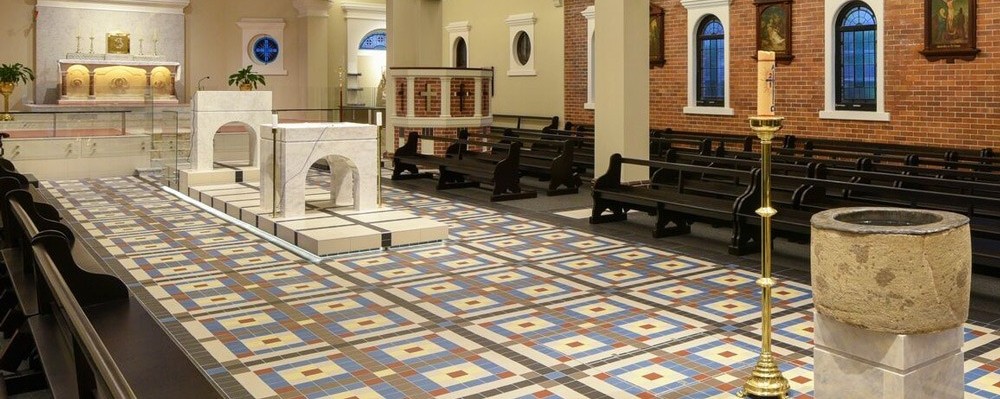Liturgical Space
National Liturgical Council

Church buildings are erected for the celebration of the liturgy. Liturgical celebrations are the action of Christ because here the Paschal Mystery of Jesus’ saving death and resurrection is made available in sacramental signs. Those baptised into Christ, that is, those who form the Body of Christ, are present in the church building doing the liturgy with Christ. Thus, the liturgy is the corporate, communal action of Church, his Body. Individuals participate by belonging and being part of the Church’s action.
The church is therefore not an auditorium or performance space where a few people are the ‘doers’ and the rest of the assembly are spectators. It is not like a concert hall where some play music and the rest listen. It is not like a theatre where actors are on stage and an audience watch. It is not like a sporting venue where certain ones play the game but most are spectators. Each of these activities can engage the audience deeply, but the liturgy is different. In the liturgy, because we are part of the Body of Christ, we do not just watch and listen to others – we act with Christ.
How do we arrange a space for this? We need to forge new models for a communal space to express our understanding of the liturgical dynamic.
- The AMBO is set in the midst of the assembly to say that God speaks to us all when the readings or homily are proclaimed.
- The ALTAR likewise is not erected for the priest’s offering in a space set apart; the people assemble around it for it is both altar and table of the Lord’s supper in which all participate.
- The CHAIR for the priest (or the cathedra for the bishop) recognises his role as the one who presides over the communal action, facilitating a variety of ministries; it symbolises the baptismal unity of the whole liturgical assembly.
- The FONT stands as the first sign of the Church’s unity because what unites everyone to Christ – priest and people alike – is baptism. As people enter the church, they take water from the font to bless themselves and remind themselves of their belonging to one another and to Christ.
The atmosphere of the church ought to evoke a powerful sense of the sacred, because it is in this place that the people of God experience the mystery of a God who is close to us in mercy and love. The use of honest building materials and the fall of light help to create a space that is manifestly open to the transcendent. Works of art – stained glass and murals – contribute to the holiness of the place. Shrines make provision for private prayer and devotion as a supplement to the liturgy. Greatest among these is the tabernacle where people may go to pray and to encounter Christ present through the blessed Sacrament.
The context of the liturgical space is communal. The church building gives witness in its suburb and streetscape to the presence of God and the power of the gospel. It expresses hospitality to all, especially the marginalised and disadvantaged, because God’s love reaches to all. A warm and welcoming entry not only reinforces the bonds of communion within the worshipping assembly, but also is a strong sign of evangelisation and outreach to the world.
Further reading:
Australian Catholic Bishops Conference, ‘And When Churches Are To Be Built…’ Preparation, planning and construction of places of worship, National Liturgical Architecture and Art Board (Liturgy Brisbane, 2014).
Australian Catholic Bishops Conference, Fit for Sacred Use, Stewardship and Renewal of places of worship, National Liturgical Architecture and Art Board (Liturgy Brisbane, 2018).
